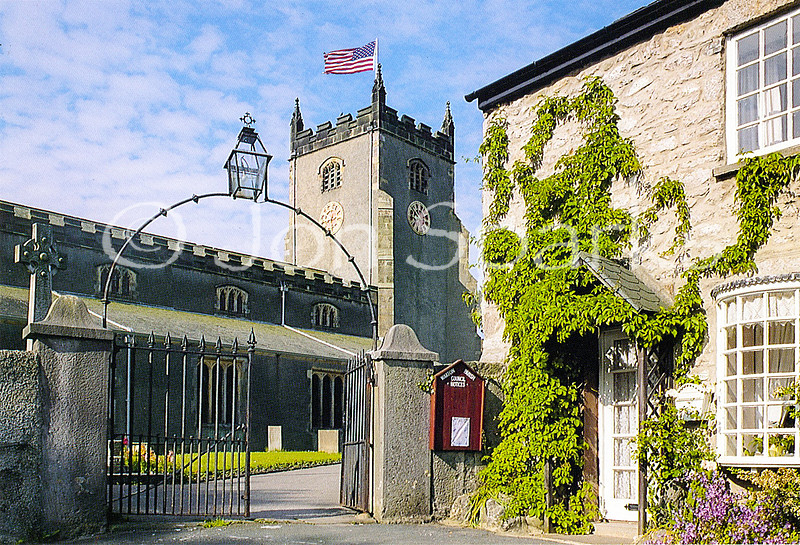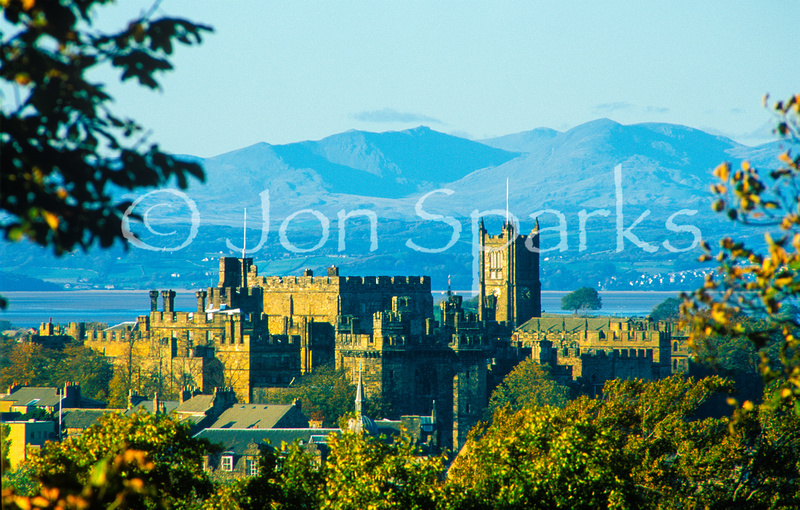Truth and ConsequencesI’ve recently had a slight contretemps on a Facebook group. The main lesson is probably to reflect more carefully on whether or not it’s wise to comment at all on other people’s images – but I did, and I had a rush of blood to the head and said I hated ‘this sort of thing’. I immediately added that this was just my personal opinion, and then went on to make some more considered comments. The person responsible for the image in question proclaimed that whether I like it or not is irrelevant to him – though this, of course, begs the question of why he bothered to respond at all. He then referred to my ‘cursory dismissal’ of his image. He also used the word ‘art’ in reference to his own work, but let’s not even go there. I might have been inclined (and might have been wiser) to leave it at that point but the phrase ‘cursory dismissal’ got my back up. My response wasn’t a spur-of-the-moment thing and I can prove it – as we’ll shortly see. I also observed with interest that some people had commented approvingly on the image without, apparently, realising that it was not a straight photograph. You’ll have noticed that I have not referred to the picture in question as a photograph but only as an image. The originator did (though only after being called out) admit that it was a composite of two photos. Now I don’t have his permission to reproduce it here, and I’m not asking for it, as I don’t want this to become any more personal than it already has. I did, at the start, say I hated ‘this sort of thing’, rather than his photo specifically. So what ‘sort of thing’ are we talking about anyway? Well, the image in question showed a field of flowers (oilseed rape I think) and a tree, under a deep red sky. There’s no doubt in my mind that the colour of the sky owed much to either a red graduated filter at time of shooting or to some heavy post-processing. If the sky had been that red in reality there would surely have been a distinct shift in the colour of the flowers too. So already we have an image that has been altered well beyond what would actually have been visible at the time of shooting. But that’s not all. Floating in that red sky was a huge full moon. Now to me it was instantly obvious that this image could never have been created as a straight photograph. There are at least two reasons why it’s impossible; I’ll explain more fully shortly. But let me just go back to that glib accusation of ‘cursory dismissal’. This is not the first time I’ve seen this kind of image. In fact I wrote something about it as far back as 2002, in which I specifically referred to ‘impossible shots created by double exposure, like a telephoto moon hovering over a wide-angle landscape.’ To which I added, ‘These make me almost queasy.’ 13 years later, they still do. (That original piece is reproduced at the end of this blog post). Of course, that is a personal reaction, and if other people like this sort of thing, that’s fine. At least up to a point... I do genuinely think, after considerable reflection, that there are reasons to be, at least, very wary about this sort of thing. Most of all, we do need to be very clear about what is or isn’t a constructed fantasy image. Anyway, as I’ve already mentioned, it struck me that some people didn’t seem to realise that the image was a fantasy and that it was both optically and astronomically impossible for it to be a straight photo. So let’s just dissect this a bit. Here’s an example. I know it’s very rough and not in any sense convincing. To do a better job I’d need a clearer image of the moon and I’d need to do a much better job of masking around the branches of the tree. But I’m not interested in spending that much time on what would still be a counterfeit image. All I need this image to do is illustrate the two main reasons why nothing like this could ever be seen with the human eye, or captured in a single photograph.
Second reason; the moon is in an impossible place. Just to help explain all this, here are the two original images, un-meddled with.This image was shot on Farleton Fell in Cumbria, a favourite spot of mine, late in the afternoon of 23 November 2007, using a Nikon D2x. The focal length was 18mm – equivalent to 27mm on 35mm/full-frame: in other words, a moderate wide-angle lens.
SizeAs far as the size of the moon is concerned, placing an oversize, telephoto, moon into a wide-angle landscape plays havoc with normal perspective. Perspective is a vital element of how we judge scale and distance and make sense of the world. It’s been well understood by scientists and artists at least since the Renaissance, and I would have thought that an intuitive grasp of perspective is established in most people at a very early age. Of course artists like Escher have played very deliberately with perspective to create visions of impossible structures. There’s nothing wrong with that. And there’s nothing wrong with fantasy images as such – but even fantasy needs some level of internal consistency. In fact the moon was once much closer to earth, and it’s still drawing slowly further away at a rate of about 3.8cm a year. This has been measured with great precision, as the Apollo astronauts placed reflectors on the lunar surface and scientists can bounce laser beams off these to determine the distance. Therefore there was a stage in the very distant past when the moon did look as large as this, though there were no humans around to observe it (let alone cameras) and both moon and earth would then have looked very different. Tidal forces were much more extreme and the length of a day on earth was much shorter. It is possible to imagine a world with either a much larger moon than our own, or a similar sized one that’s much closer. In fact, to appear as large as this while remaining at the same distance as our own moon is today, the ‘moon’ would have to be around four times the Earth’s diameter. It would be the planet and Earth would be the satellite. But four times the diameter implies 64 times the volume, so even if the planet were much less dense than our own Earth or moon, it would be much more massive. The implications go on and on... DirectionThe second reason why the image is impossible is that it places a full moon in roughly the same direction as the (in this case) setting sun. It doesn't matter whether it’s sunset or sunrise as the full moon will always appear in the opposite direction to the sun. You can easily verify this for yourself. A full moon will rise in the east in the late afternoon or early evening, when the sun is sinking in the west. For sunrise/moonset, the same applies but the directions are reversed – sun east, moon west. The reason for this is very simple; the moon is lit by the sun. When the moon is between us and the sun, the side facing us is in shadow – we call this a new moon. (And on the rare occasions when they line up exactly, we get an eclipse). The only way that you could see a fully illuminated moon in the same part of the sky as a rising or setting sun would be if we were on a planet in a binary star system. In other words, there would need to be two suns. And even then, if there were such a big and bright moon, wouldn’t it dilute the red glow of the setting second sun? And wouldn’t a moon as bright as that cast shadows of its own? I hope I’ve done enough to show that images like this are impossible. That is to say, nothing like this will ever be seen on Earth by the naked eye, nor can it ever be captured in a single exposure by any camera. But does it matter? Well, if such images are clearly recognised as fantasy constructs, maybe not. I enjoy fantasy and I could enjoy the vision of a world with a huge moon, or imagine living in a binary system. But, as I said earlier, even fantasy needs some level of internal consistency. And a 17-times-too-big moon in the skies over a normal landscape raises all sorts of unanswered questions – never mind the second issue of ‘what’s making it shine?’. Some people may be able to view such images without asking such questions but I can’t, and I think failing to grasp what’s ‘wrong’ with such images implies a lack of understanding of some fairly basic facts about the world. Still, most of us would probably say that there’s no harm in fantasy as long as we all know that it’s fantasy. My worry is that if we aren’t clear about the nature of constructed images, we devalue genuine photography. If we can’t tell what’s real and what isn’t, where’s the sense of wonder in a real photo of the Milky Way or the Aurora? After The Two Towers:Fantasy, Reality and PhotographyThis was originally written at the end of 2002 and appeared in a long-gone online magazine. I’m repeating it exactly as written, complete with references to other articles that I can’t now trace. At this point I hadn’t acquired my first digital camera (that was in 2004) and was still shooting slide film.
The Two Towers, the second part of Peter Jackson’s Lord of the Rings trilogy, is currently packing ‘em in at cinemas across the country. Don’t miss it: it’s probably the greatest fantasy movie ever made. It’s also worth seeing simply to admire the seamless blend of conventional film and digital images. The character Gollum is a brilliant creation, but there are also many amazing partly or wholly digital landscapes. As a fantasy film, pure and simple, it’s a masterpiece. However, we also know that the real footage was shot on location in New Zealand. New Zealand is now Lord of the Rings country, and frenetically selling itself as such. Well, on one level, good luck to it. But there is a problem. The New Zealand Tourist Authority would no doubt like us to think that the landscape we see on the big screen is what we’ll see when we go there. But how, with so much digital content, can we be sure? How, indeed, can we be sure of anything we see? This has been most discussed in relation to news and documentary images, but it concerns all photographers. The Nature Group of the RPS, for example, in its Nature Photographer’s Code of Practice, states that: ‘a nature photograph should convey the essential truth of what the photographer saw at the time it was taken’. A similar stipulation is built into the rules of the BG Wildlife Photographer of the Year Competition. As a landscape and travel photographer, I have been concerned with these issues for some years. The Two Towers just kept the pot simmering. What really stirred it up was the January issue of In Focus, with the fortunate, if not fortuitous, juxtaposition of two fascinating articles: Niall Benvie’s Seeking Ecological Asylum and Mike Busselle’s Decisions. If you haven’t already read them, one of the beauties of a webzine is that you can do so now. But to summarise, Benvie’s article is a powerful meditation on our relationship with nature and landscape, and what it means to us as photographers. Busselle’s explores some of the possibilities offered by digital imaging. I’m not a digital Luddite. I’m not concerned whether an image is initially captured on silver halide crystals or on a CCD. Nor do I have a blanket aversion to ‘manipulation’. Mike Busselle’s first two examples illustrate a powerful argument in favour of digital capture: the potential to control local tonal values more subtly and more precisely than would ever be possible with a filter. As Mike says, ‘I’ve always considered the neutral graduate to be one of the most useful filters but, in truth, it offers a fairly crude and limited degree of control...’ And these aren’t the only limitations, as I’m well aware, having recently had a neutral grad snatched from my hands by a strong wind on Helvellyn! So I’m happy to embrace digital technology, whether in initial capture or later manipulation, as a way of fine-tuning the image: improving shadow detail, removing unwanted colour casts, and of course getting rid of dust and scratches. However, when manipulation alters the actual content of the image, it’s a different matter. I would argue that, just like a nature photograph, ‘a landscape or travel photograph should convey the essential truth of what the photographer saw at the time it was taken’. In the context of a fantasy like The Two Towers the only limit is the human imagination. But in, say, a New Zealand tourist brochure, an image should be - at the very least - a reasonable guide to what one could expect to see at that location. This conviction has developed during my own career. Over ten years ago, when digital technology was a lot less familiar, I was commissioned to photograph a local church which, for historical reasons, flies the Stars and Stripes on July 4th each year. On the day the light was good and there were no parked cars in the way, but there wasn’t quite enough wind. Lancaster Tourism asked me if they could blend in a flag shot by another photographer, and I agreed. I hadn’t anticipated that they would tell everyone about this when they launched the resulting greetings card.
This image isn’t really misleading: you might see it just like this on another July 4th. Still, it returned to haunt me a few years later. After some detective work I’d found a spot where I could get a view of Lancaster Castle with the Lakeland fells behind. A ‘window’ in the trees framed the shot perfectly. This has become my most reproduced shot, appearing on greetings cards, posters, calendars and in magazines and tourist brochures. It has also attracted much comment locally, because most people weren’t familiar with this view. Many have asked me how it was done: some have simply branded it a ‘fake’ - citing the Stars and Stripes image as evidence that I manipulate images. Having been quietly proud of how I’d found the viewpoint, these comments stung. It felt like an attack on the truth of the image - and, by implication on my own honesty. And it led to a decision. I started putting the following on invoices and delivery notes: Substantive manipulation of these images is not permitted, except in special circumstances and by prior agreement.
What I mean by ‘substantive manipulation’ of an image is simply anything that changes the substance: taking out something that was there or adding in something that wasn’t. Tweaking the contrast or colour of an image is a matter of interpretation, at least up to a point,: colouring the Taj Mahal bright green would surely be a substantive change! When you make changes like this, or allow someone else to do so, you are no longer just interpreting the scene, you are materially altering it. And when that image is presented, explicitly or implicitly, as a representation of a real place, it becomes a falsehood. Which, if you are in the business of travel or landscape photography, is a serious matter. Of course parked cars and power-lines can be an irritating distraction. Cars come and go, and sometimes you can ‘lose’ a power-line just by choosing a different viewpoint. But if you can never see a scene without parked cars, that’s the reality. (Maybe the answer is to campaign for more yellow lines.) If there’s no way to see the view without power lines, that too is the reality. These issues are not new. Manipulation is as old as photography itself. Combination printing, air-brushing and retouching, double-exposures and slide sandwiching have all been used. We’ve all seen impossible shots created by double exposure, like a telephoto moon hovering over a wide-angle landscape. (These make me almost queasy). What is alarming about the digital aspect is the utterly casual way in which images are manipulated without a second thought. But a falsehood is a falsehood, whether or not it’s created digitally. And I think it’s wrong to tell lies. My resolve on this point was tested again more recently, when a book publisher wanted to ‘remove’ a rock from a potential cover image. However, having declared in the book that none of the images had been manipulated, I really had to stick to my guns. Fortunately we were able to agree on an alternative shot. What’s the harm? Was that rock really important? Maybe not: I could easily have taken a shot without it, just by moving along the beach a few metres. But as the sun came up on that particular morning, that was the shot I felt I wanted to take. I can’t say that removing the rock would significantly mislead anyone about the location. But it would mean that the image was no longer the shot that I took. It would no longer be the embodiment of what I saw and what I felt. What this illustrates is that there’s another side to this debate: it is not solely a simple question of honesty. It also has something to do with what it means to be a photographer. For me, it comes back to why I became a photographer in the first place, why photography still excites me9, why it will never be just a job. For me, being a photographer is about being there. It’s about the whole experience of a place and the effort to capture an image that says this is what it was like. It’s why the time spent walking around, looking, touching, listening, even smelling, are as important as time spent looking through the viewfinder. And ultimately, photography is about those moments when everything comes together: when the light and the weather conspire to make magic. Moments. Decisive Moments. ‘Being there’ is not only about place; is is also about time. In the studio you may be able to repeat a shot exactly. In the natural world every moment is unique. Clouds move, the light shifts. Over longer time-scales, streams alter their courses; trees grow and fall. So do mountains, if you wait long enough. ‘It may seem paradoxical that a still photograph can capture this dynamism - but there’s no doubt that it can, just as it can capture the dynamism of an athlete or gymnast. And the process of landscape photography - the actual doing of it - means tuning in to the dynamism of land, light and weather. It means developing a relationship with the landscape - which is, at least partly, what Niall Benvie discussed last month. It doesn't make it easy, but it does make it endlessly rewarding. I’m more than happy with anything that helps me to express what I saw and felt. Some forms of manipulation - be they filters, traditional darkroom techniques or Photoshop’s Curves dialog - can help to sharpen that sense of being there. But deleting a rock, or importing a ‘better’ sky from another time or place, destroys it. It negates everything that makes me want to be a landscape photographer. The problem with manipulation, then, is not just about the literal truth of an image or whether it creates a false picture of reality - though this is in itself a very serious issue. It is also about something of more personal concern to all of us: it is about what it means to be a photographer.
Keywords:
camera,
composite,
counterfeit,
discussion,
fake,
image,
manipulation,
photography,
reality,
truth
Comments
No comments posted.
Loading...
|






